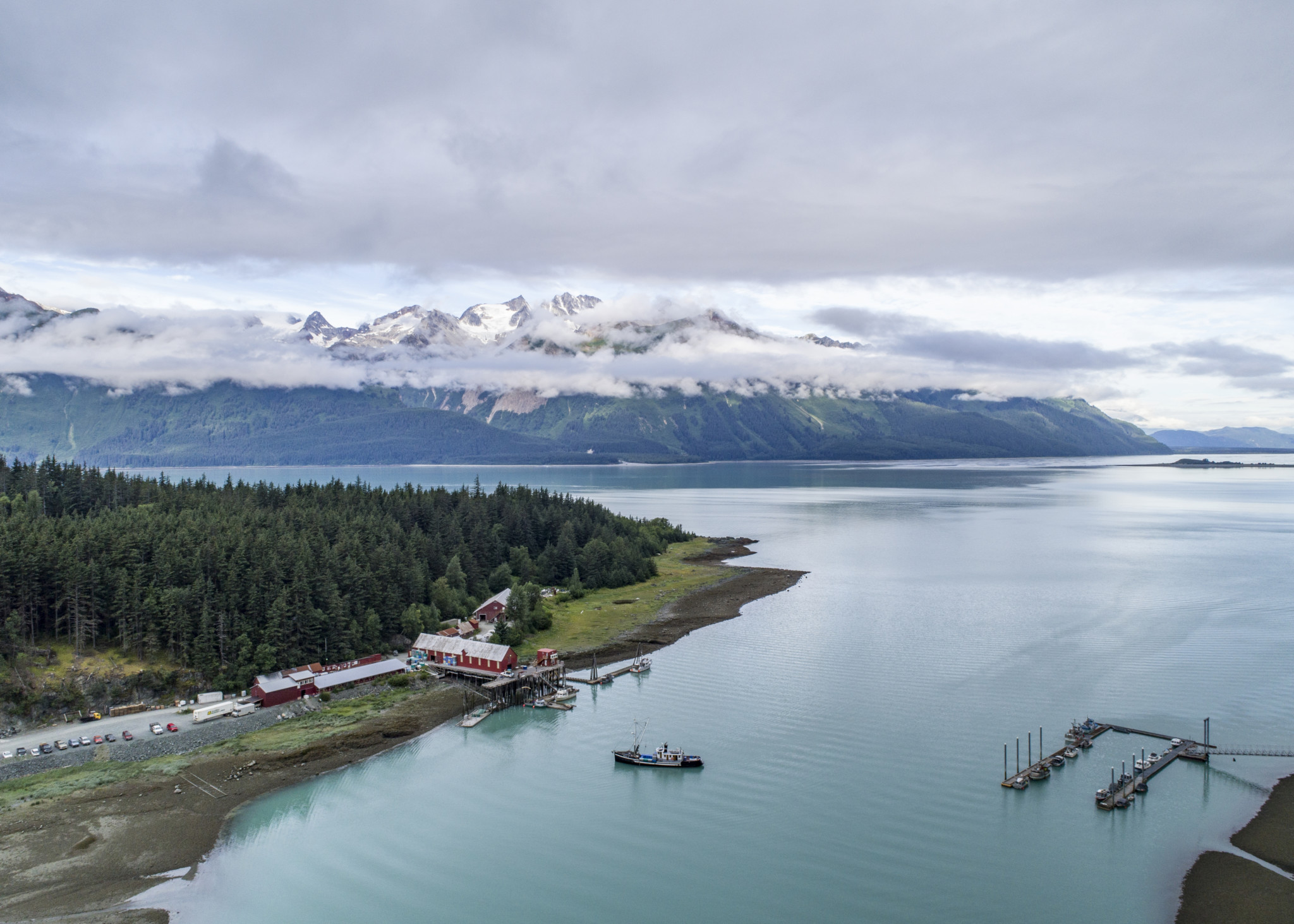Harry and Genny Rietze took over management and ownership of Haines Packing Co.
in Haines, Alaska, in 2013, purchasing the business from Harry’s father and uncle.
Can you share a brief history of Haines Packing Co.?
The Haines Packing Co., established in 1917, is one of the oldest continually operating seafood processing facilities in Southeast Alaska. The facility was built to efficiently process and can the salmon resources that are harvested in abundance during Alaska’s long summer months. Many of the remnants from the original facility line our property today. During its history, Haines Packing Co. has also supported other processors and fishermen of the region by operating as a storage facility, supply store and grocery store. My dad, Hugh Rietze, and uncle Alton Sullivan purchased Haines Packing Co. in 2001. They immediately invested in the facilities’ processing operations and grew the volume of seafood processed significantly over the next decade.
How long has Haines Packing been under its current management?
I purchased the Haines Packing Co. in 2013 from my dad and uncle. My wife, Genny Rietze, and I have been at the helm since 2013. My focus has been to grow the business methodically in line with our company core values. The majority of the seafood we process goes to the domestic U.S. market. However, we also have two retail store locations, one in Haines, Alaska, and another in Whitehorse, Yukon.
Which area of Alaska seafood does Haines Packing specialize in?
We process all five species of salmon, although pink salmon is not a strong area of focus for us. We also process halibut, Dungeness crab, and coonstripe shrimp. We smoke and jar salmon, and produce a breaded product on a smaller scale for our two retail locations.
What are some the hurdles that Haines Packing has had to overcome to grow as a processor?
Like many processors in Alaska, infrastructure and equipment have been a challenge for us. I’m here to support fishermen and to support their fishing efforts. I need to have the right equipment in place and keep our facility up to modern standards. Haines has a history as the home to a very dedicated commercial fishing fleet.
How has the re-emergence of Haines Packing affected the local fleet?
We have had amazing support from our local fleet. We have an elite fleet of quality-driven fishermen fishing for the company. Our fishermen really appreciate having a local buyer and someone they can come speak to in person.
Haines is one of three communities in Southeast Alaska physically connected to the continental highway system. How has this helped your operations?
We are a rural community that relies heavily on the Alaska Marine Highway System. However, we also have a road to connect our town to Canada and the Lower 48. We have definitely benefited from being connected to the highway. We are only a 36-hour drive from Seattle, which makes trucking fresh product out of Haines very viable.
What are some current or emerging challenges that either your company or the Alaska fishing industry is facing?
Our biggest challenge right now is the reduction in time and area for our fishermen to fish. The king salmon returns have been poor all over the state, and the Chilkat River used to have a strong return that is dwindling. Although necessary, the protective measures taken by management are impacting our local gillnet fleet.
What does the future hold for Haines Packing Co.?
Over the next few years we are working on really tuning in our current processes to become more efficient. We may add a few more boats to our fleet, but our current volume is matched well with our daily production capacity. We would like to always be looking ahead for the next possible trends in the seafood industry and have the ability to switch gears and pursue those markets.
Consumer demand for environmentally responsible products, coupled with preference for healthy superfoods like wild Alaska seafood, leads me to believe there will be an increased demand for thermally processed shelf-stable seafood in the coming years. The efficiency and practicality of cans and retort pouches is unmatched by vacuum sealed and frozen products. Cans do not require additional energy to remain foodsafe, are infinitely recyclable, and meet a growing consumer desire to reduce single-use plastic packaging in what they eat.







